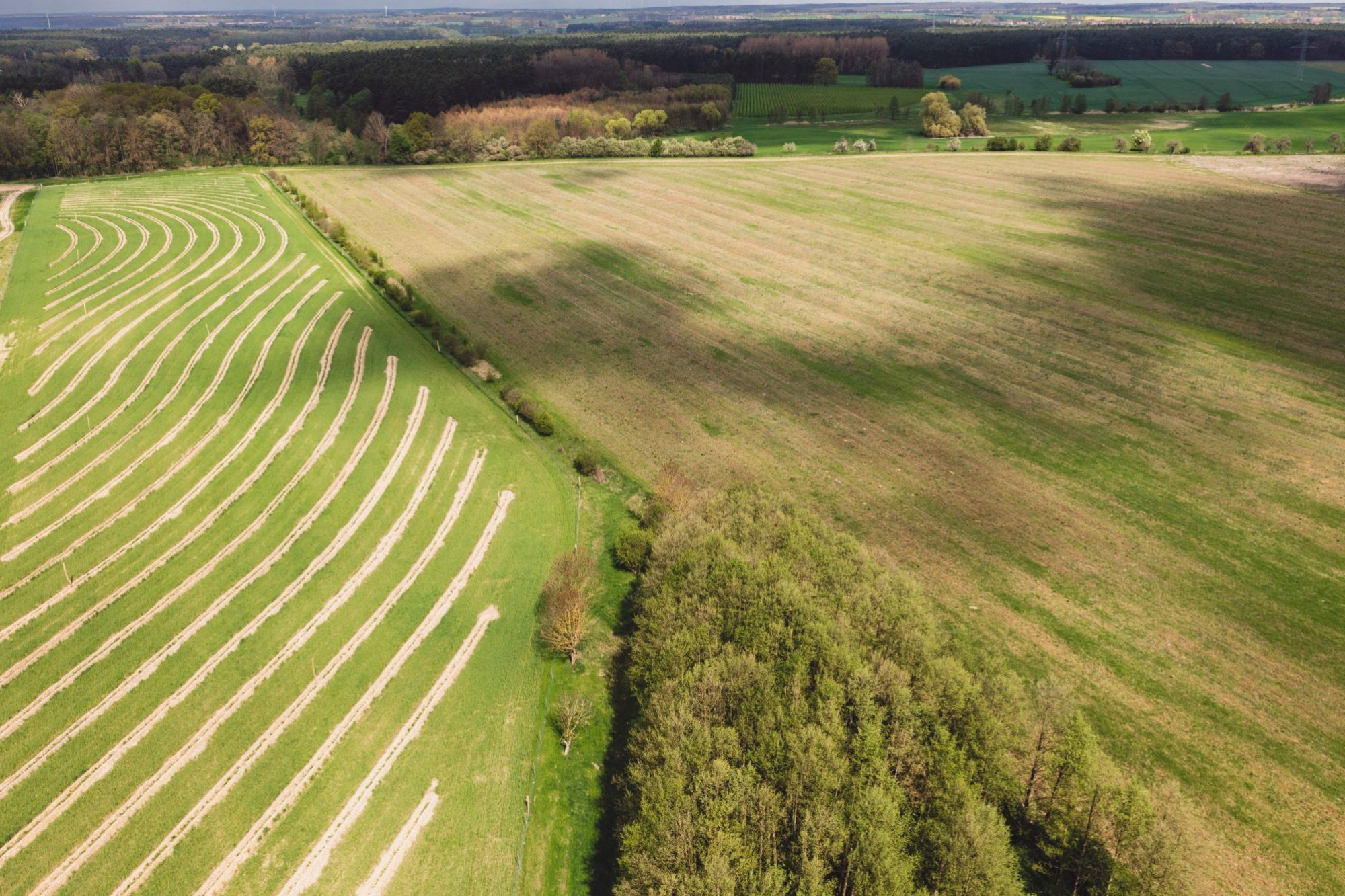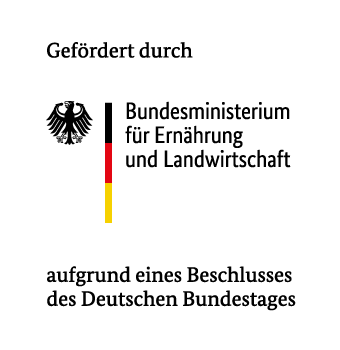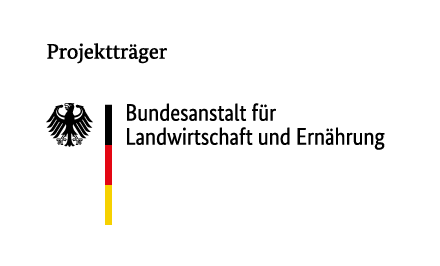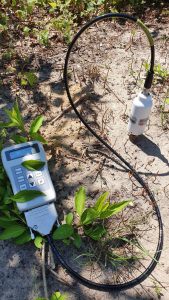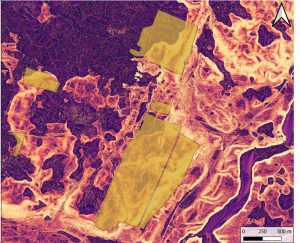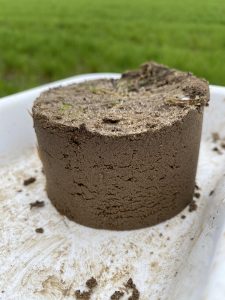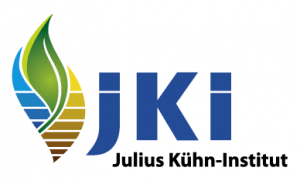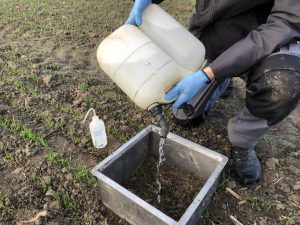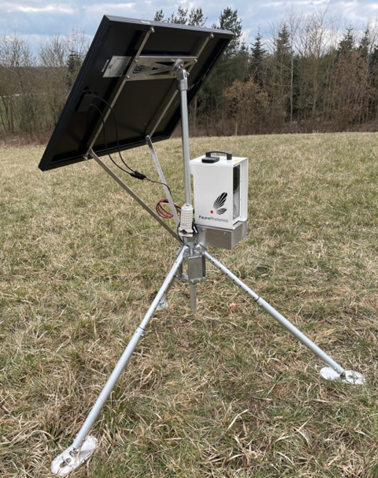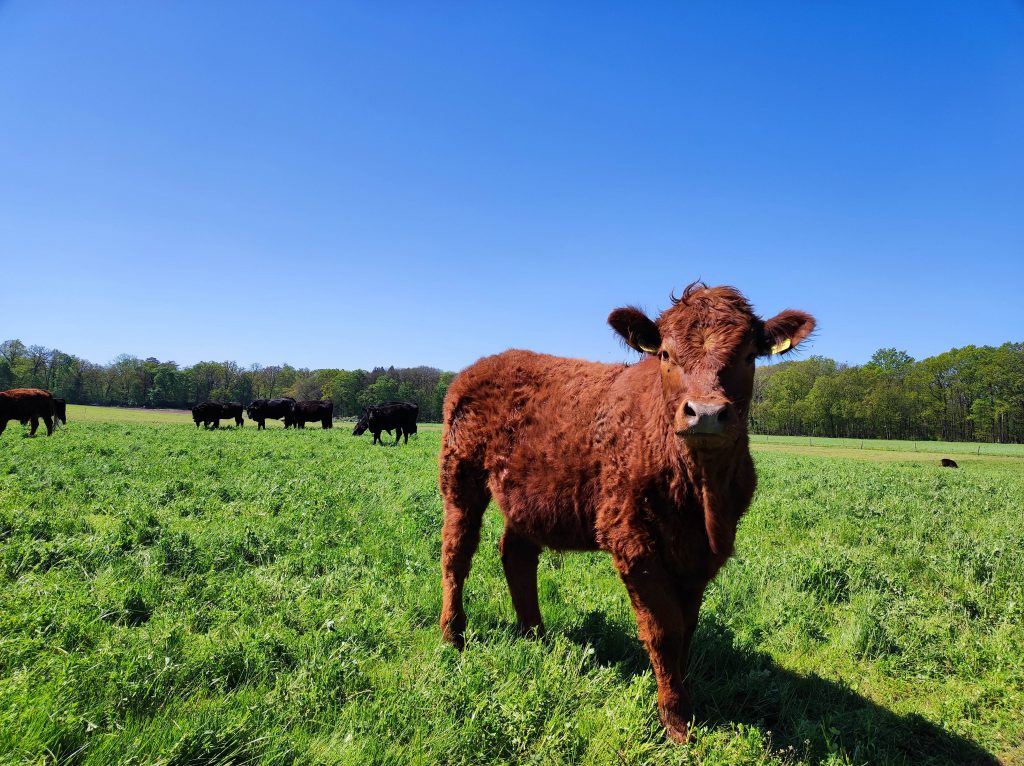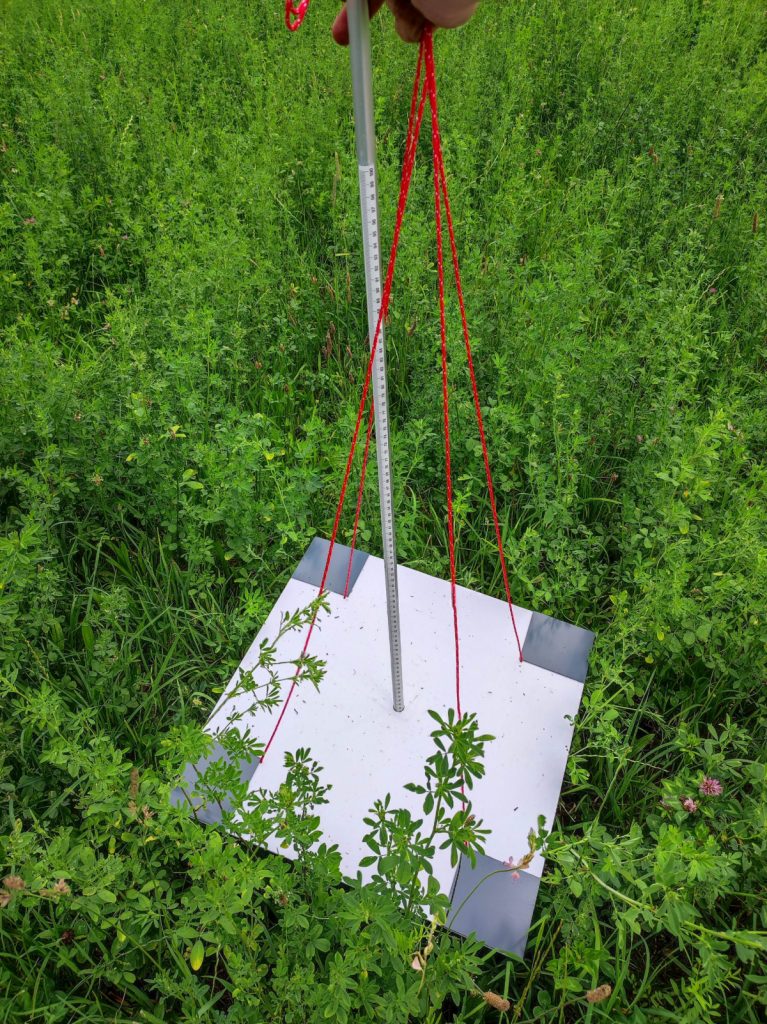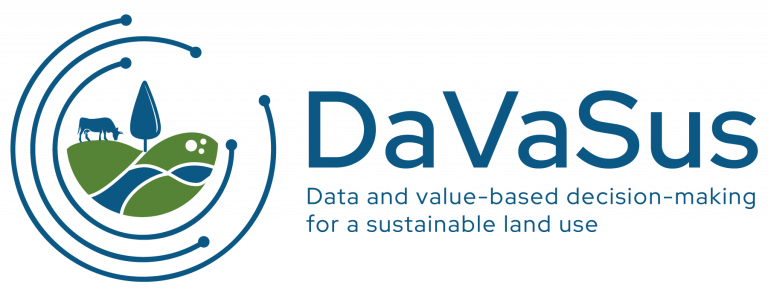Who we are
DaVaSus [1] is one of the "experimental fields" funded by the Federal Ministry of Food and Agriculture (BMEL). As future farms and future regions, the experimental fields are researching digitalization in agriculture . This also includes future-oriented farms and regions from upstream or downstream value chains. The core aim is to research the benefits of digitalization for domestic agriculture in order to make farms more productive and competitive while promoting and improving sustainability, animal welfare, environmental, nature and climate protection. DaVaSus is a joint project of the Finck Foundation, the Leibniz Institute for Agricultural Engineering and Bioeconomy (ATB), the Julius Kühn Institute (JKI) and the Kuratorium für Technik und Bauwesen in der Landwirtschaft e.V. (KTBL) and runs from 10.02.2023 to 31.12.2025.
[1] The project is funded by the Federal Office for Agriculture and Food (BLE) as part of the announcement regarding the funding of the creation of experimental fields as future farms and future regions of digitalization of agriculture, as well as in upstream and downstream value chains The funding code is 28DE204A21.

Project goals
- We collect ecological, economic and social data on various forms of landuse and management among future farms, as automatically as possible.
- By evaluating the data, we identify measurement methods and indicators that are relevant in practice.
- We evaluate the ecological and social data in monetary terms and present the economic-ecological-social operating result in a dashboard.

Test site
Click on the indivudal fields to find out more on their agricultural management.
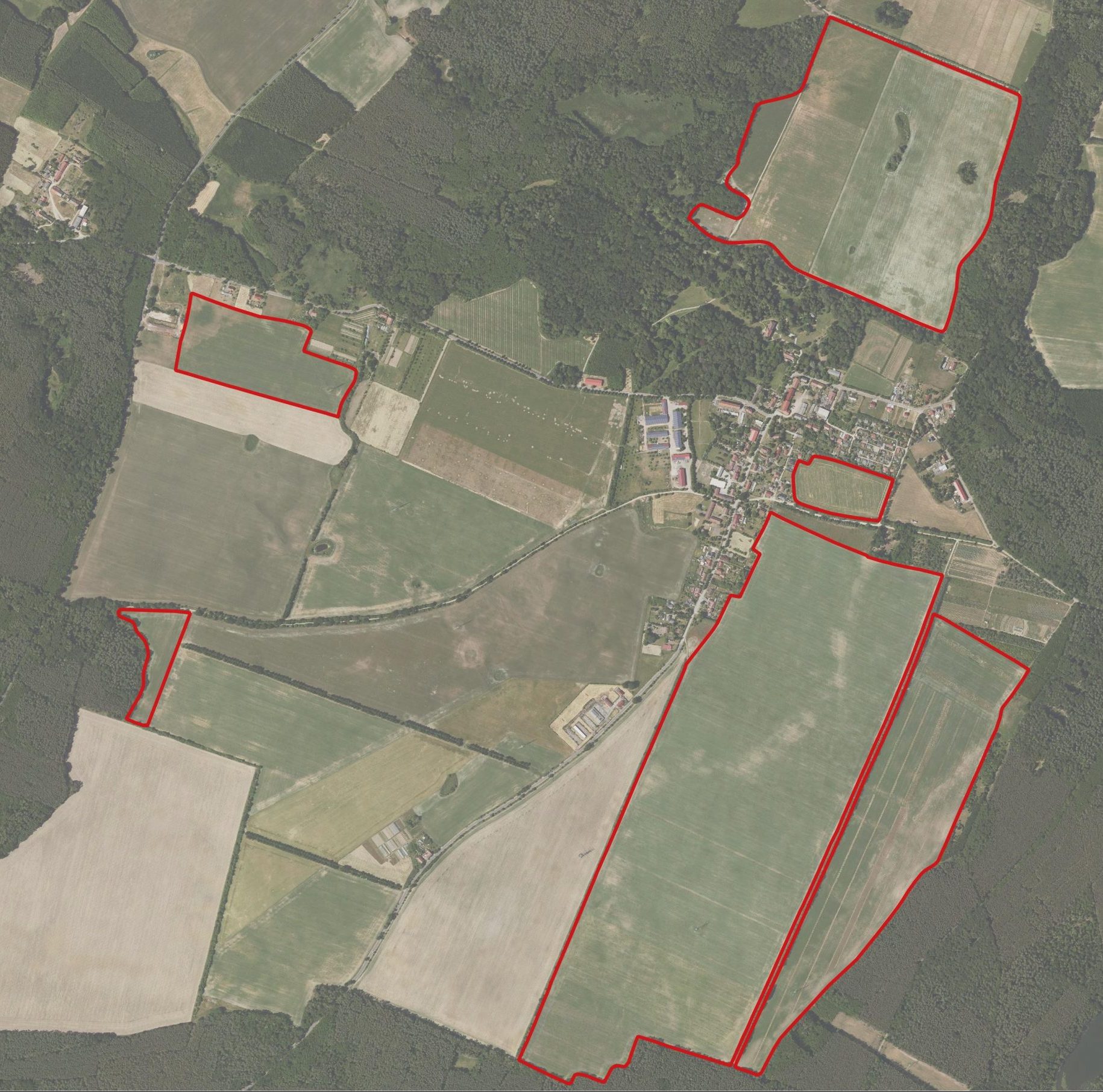
Reference field
Our reference field is organically farmed in the classical sense in order to better understand and record the influence of the different forms of landuse, both scientifically and economically.
Agroforestry
Planting strips of trees and shrubs on agricultural land leads to the creation of agroecosystems that that are based on the natural occurence of trees and shrubs in the landscape. The agroforestry systems follow the principles of syntropic agriculture and are integrated into arable farming practices.
Agroforestry
Planting strips of trees and shrubs on agricultural land leads to the creation of agroecosystems that that are based on the natural occurence of trees and shrubs in the landscape. The agroforestry systems follow the principles of syntropic agriculture and are integrated into arable farming practices.
Multifunctional regenerative eco-farming
On the arable land studied, organic farming methods are implemented in combination with additional measures that promote humus formation. These include the cultivation of cover crops and undersown crops, flower strips, no-till farming, cattle grazing and seed dressing with compost extract produced by the farm.
Holistically managed suckler cow husbandry
More than 150 cattle are integrated into the crop rotation through holistic grazing management and as an integral part of the ecosystem. This is characterized by the fact that the cattle are kept outside all year round and eat, wherever possible, grasses and legumes that grow all year round. Depending on the season, the cattle is moved onto plots with fresh growth up to 5 times a day.
Multifunctional regenerative eco-farming
On the arable land studied, organic farming methods are implemented in combination with additional measures that promote humus formation. These include the cultivation of cover crops and undersown crops, flower strips, no-till farming, cattle grazing and seed dressing with compost extract produced by the farm.
Data collection
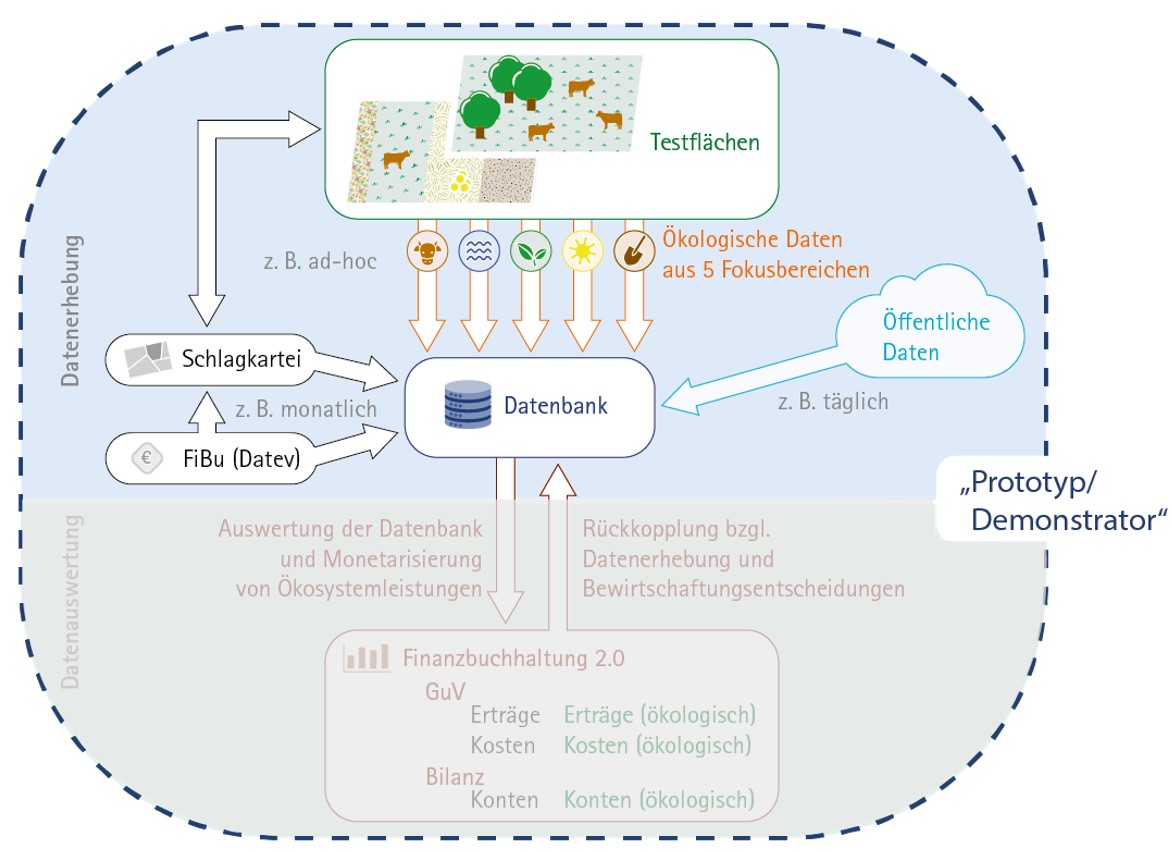
In order to achieve the project objectives, the complex relationships between soil, water, biodiversity, (micro)climate, animal welfare and applied farming methods are to be measured using digital instruments, then made available via mobile communications and evaluated as automatically as possible.
Weather
For a scientific evaluation of all measurements, the prevailing weather conditions must be documented. Weather stations permantly recording parameters such as temperatures, precipitation, solar radiation and wind are used for this purpose. Several stations are installed on the test fields in order to thoroughly investigate the climatic effects across all testing areas and to be able to accurately map the sometimes significant micro-variability in the terrain climate.
Soil texture
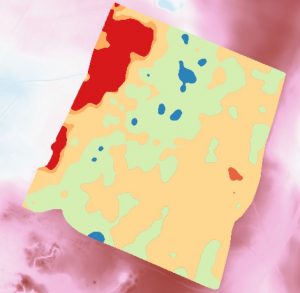
The soil texture provides information about the storage capacity for nutrients and water. This is measured in the field using the Geophilus multi-sensor system, which consists of a gamma sensor and a rolling electrode system for recording apparent electrical resistance at five different depths up to 1.5m. in conjunction with a few reference laboratory analyses, high-resolution soil texture maps are generated from this data.
Soil moisture
Soil moisture has a major influence on plant vitality and therefore on potential yields. This is measured using soil moisture probes or modeled using digital relief analysis (topographic moisture index), sensor-based soil texture maps and data from handheld reflectance spectrometers calibrated using laboratory reference analyses.
Humus content
Site-optimized humus management is a central component of nutrient- and resource-efficient agriculture, securing soil fertility in the long term and minimizing environmentally harmful and climate-damaging substance emissions. The humus content is modeled using drone and satellite images or handheld reflectance spectrometers. In order to create the required calibration models, the humus content of reference samples is measured in the laboratory.
Erosion risk potential
Using freely available high-resolution digital terrain models, the movement of water on the earth's surface can be modeled and the relief-related susceptibility to erosion can be estimated. Together with a mapping of erosion forms in the terrain, the erosion risk potential can be depicted. This provides a basis for targeted management measures to minimize erosion, reduce material discharges and thus protect water bodies.
Soil microorganisms
Communities of soil microorganisms are recorded using molecular biological methods. After extracting microbial DNA from soil samples, the amount of bacteria and fungi in the extractions is determined using real-time PCR (real-time polymerase chain reaction).
Earthworms
Earthworm communities are extracted from the soil by chemical extraction in the field. Earthworms that cannot be identified morphologically are determined by means of high-resolution melting curve analyses using real-time PCR.
Flying insects
With the help of three infrared sensors, various forms of cultivation will be examined in terms of flying insect biodiversity over the course of the project. These record the activity of the entire flying insect fauna in real-time and can differentiate between individual insect species. Through methods of machine learning the sensors are trained to identify different species based on wing beat frequency, body size and other unique characteristics.
Soil greenhouse gases
The soil greenhouse gas fluxes of carbon dioxide (CO2), methane (CH4) and nitrous oxide (N2O) are measured in the field using a Fourier transform infrared spectrometer (FTIR). The FTIR sensor enables precise and parallel measurement of CO2, CH4 and N2O in real-time.
Soil organic carbon
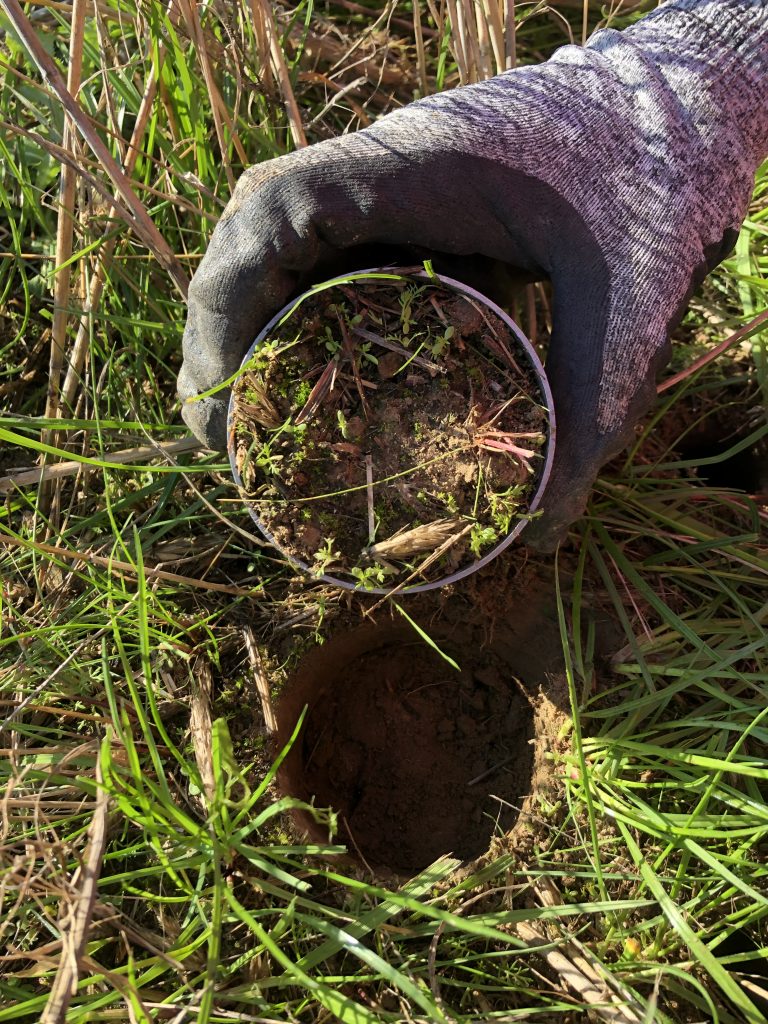
The content of organic soil carbon is determined by means of combustion and subsequent thermal conductivity detection. In addition to the percentage of organic carbon in the soil, the amount of organic carbon per unit area (carbon stock) is to be calculated by determining the soil density.
Health monitoring
Our aim in the DaVaSus project is to assess the welfare and health of cattle in a year-round grazing system. To this end, modern sensors and monitoring systems are used to analyze physiological and ethological parameters in individual animals in conjunction with management practices and environmental conditions. The animals are also not being affected by the continuous measurements.
Pasture biomass estimation
For a scientific validation regarding the automated animal monitoring in pasture management, the productivity and quality of the pasture biomass must be evaluated. For this purpose, pasture growth is estimated by means of dry matter measurement and analysis of the constituents is carried out in parallel with animal monitoring. It is also necessary to consider the influence of the surrounding climate in order to gain an optimal understanding of animal behavior and pasture management.
Data evaluation
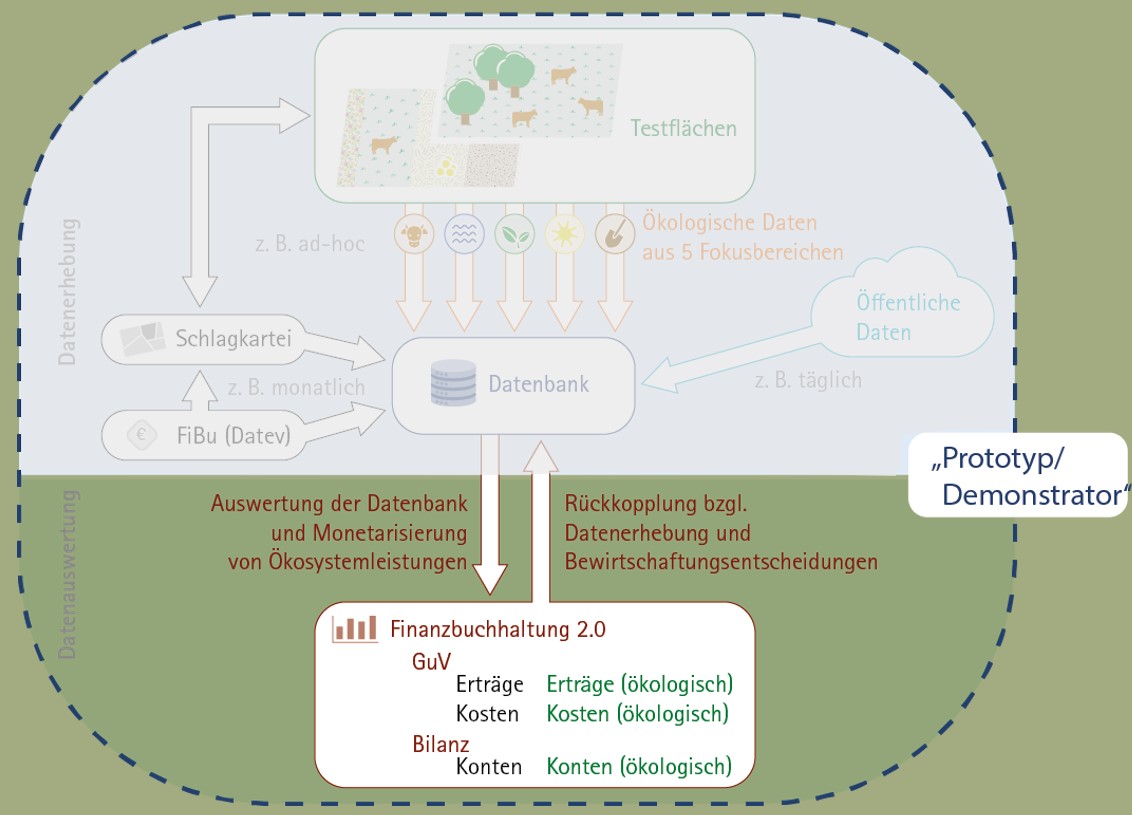
In addition to the classic economic evaluation, the monetary valuation of ecosystem services is a key focus area of the project to enable the provision of meaningful and holistic results to farmers on their management methods quickly and easily.
Total operating cost calculation
On the basis of planning data and data from the test and reference areas, the KTBL calculates the total operating costs of the farm. The aim of the total operating cost calculation is to map and compare farms economically.
Cost-benefit analysis
In contrast to the total operating cost calculation, the cost-benefit analysis does not consider the entire company, but only individual production processes. For selected production processes, indicators such as the output free of direct and labor costs or the output free of individual costs are determined.
Determination of working time
For working methods for which the KTBL has little or no planning data, the labor and time required is recorded to enable reliable determination of the operational cost of the future farm. This will particularly concern suckler cow husbandry and agroforestry systems.
Regionalwert Leistungen GmbH uses their value-performance calculation to evaluate and monetize the sustainability performance of farms based on around 300 key indicators. This can be, for example, the effort required to implement a crop rotation involving many different squences, which has a positive effect on soil health but is not explicitly rewarded by the market.
The project aims to record and monetize the sustainability performance of the trial operation and compare it with the impact measurements of the project partners. Key indicators relevant to the project will be focused on and new ones will be developed if necessary to achieve this goal.
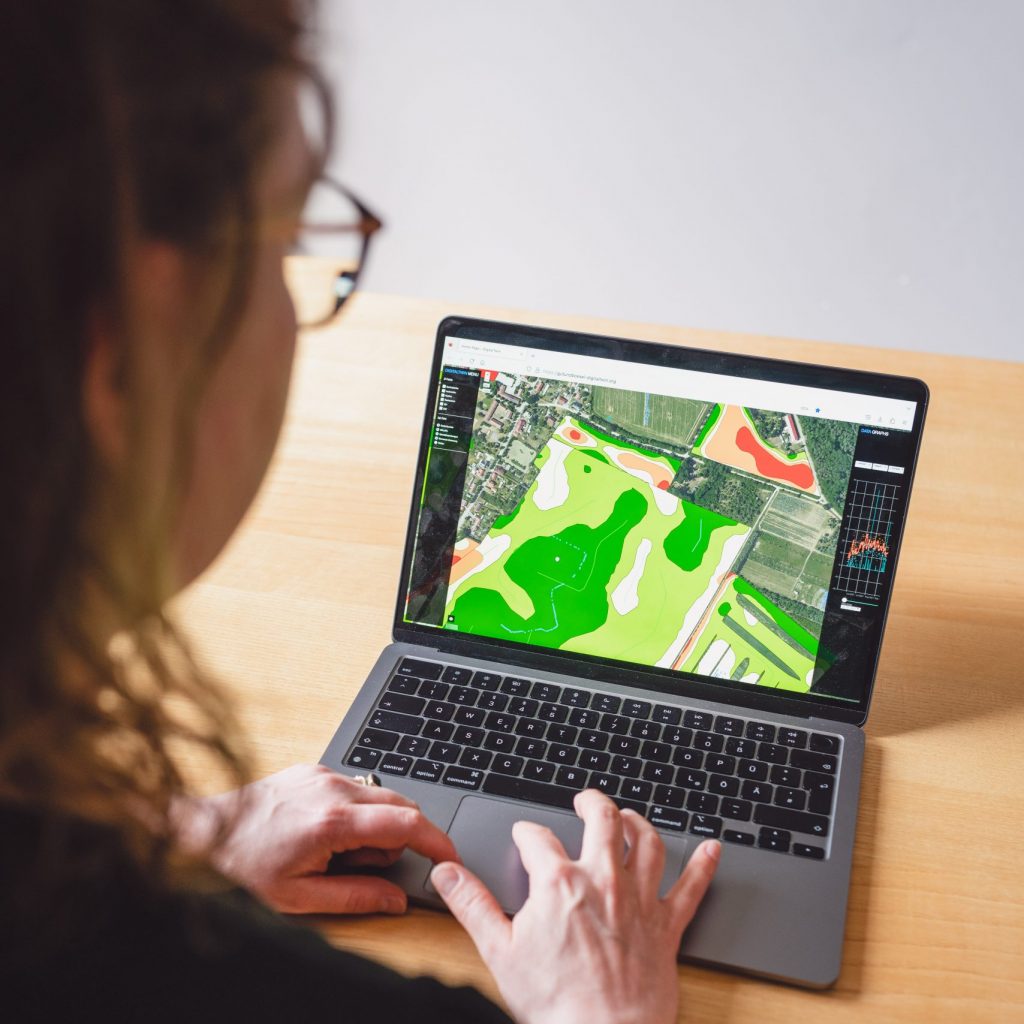
Dashboard
This is where you will soon be able to try out the DaVaSus evaluation model

